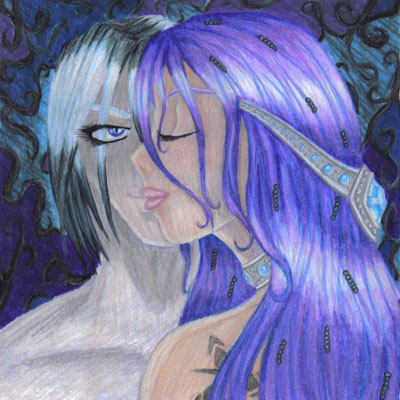All Nonfiction
- Bullying
- Books
- Academic
- Author Interviews
- Celebrity interviews
- College Articles
- College Essays
- Educator of the Year
- Heroes
- Interviews
- Memoir
- Personal Experience
- Sports
- Travel & Culture
All Opinions
- Bullying
- Current Events / Politics
- Discrimination
- Drugs / Alcohol / Smoking
- Entertainment / Celebrities
- Environment
- Love / Relationships
- Movies / Music / TV
- Pop Culture / Trends
- School / College
- Social Issues / Civics
- Spirituality / Religion
- Sports / Hobbies
All Hot Topics
- Bullying
- Community Service
- Environment
- Health
- Letters to the Editor
- Pride & Prejudice
- What Matters
- Back
Summer Guide
- Program Links
- Program Reviews
- Back
College Guide
- College Links
- College Reviews
- College Essays
- College Articles
- Back
The Changes of Morals in Different Versions of Cinderella
A fairy tale is a sort of fable featuring dwarfs, elves, fairies, or talking animals to convey morals to children that they will keep forever. One of the most familiar is Cinderella, a magical story about how a beautiful and gentle girl overcomes difficulties and finally lives a happy life with a prince. The story has hundreds of oral and written versions including the most popular Disney film and the original Grimm Brothers’ version. Even though both express a similar tale, by comparing the two, their detail variances affect their plots which, in turn, produce different morals.
The first major difference is Cinderella’s father. In the Grimm Brothers’ version, the father is not dead, as he is in the Disney movie. Instead, he is alive and is indifferent towards Cinderella. When his new wife and her daughters treat Cinderella as inferior, the father says nothing, leaving her weeping near her mother’s grave alone. His inaction strikes a chill into readers’ hearts. Also, when the prince arrives at Cinderella’s house, not once but twice, and tells the father an unknown girl is hiding in various bits of his property, the father wonders “Could it be Cinderella?”(Grimm, 3 & 4) and gives the prince an axe to smash down her hiding place. This is the most horrible of his actions. If her own father will not stick up for her, how will she do it for herself? In contrast, Disney rewrites the father as a good-natured gentleman who dies soon after he remarries, partially due to the gender inequality in 1950s that Disney did not want to degrade the status of men. He loves his only daughter with all his heart and lavishes every imaginable care on her. Even the purpose of his second marriage is to provide Cinderella maternal love. Disney conveys that everyone is entitled to a happy family which contrasts with the original.
Disney modifies the protective figures from the original story as well, therefore changing the original moral. The Grimm Brothers detail Cinderella’s mother’s death, which Disney ignores. When the mother feels her end is near, she tells Cinderella to “remain pious and good…… and I will look down on you from heaven and be near you”(Grimm, 1) as her last words. Cinderella follows her mother’s instruction, endures hardships, and plants a hazel tree near her mother’s grave where she seeks comfort from her mother’s spirit. Whenever Cinderella expresses wishes, a white bird living in the hazel tree grants them. The hazel tree represents her mother’s presence after she dies, watching over Cinderella and realizing her wishes. The moral is that if children follow their parent’s directions, they will reap the rewards. However, this maternal love and spiritual undertone are lost entirely in Disney’s version. The godmother, mice, and dogs take the role of the hazel tree. It is them, instead of the hazel tree, help Cinderella overcome difficulties and produce a fancy dress and carriage. Certainly, they help her because of her kind soul, which encourages her to remain grateful. The moral Disney conveys is that if children stay kind-hearted, good things will come to them.
Furthermore, Disney reshapes the stepsister characters. Originally, the stepsisters have gorgeous appearance, “They were beautiful, with fair faces” (Grimm, 1), however, their hearts are evil and their happiness comes from other people’s suffering. “They took her beautiful clothes away …… and gave her wooden shoes” (Grimm, 1). They never miss an opportunity to torture Cinderella. In the end, they deserve the punishment inflicted upon them: their eyes are pecked out by the birds in Cinderella’s wedding. “For their wickedness and falsehood, they were punished with blindness as long as they lived”. (Grimm, 6) Through the description of the villain like Cinderella’s stepsisters, the Grimm Brothers teaches the readers that a person’s moral character does not depend on her appearance and evil will be rewarded with evil. On the contrary, the stepsisters are just as ugly and hideous as their hearts are and their ending is overlooked in the Disney movie. Thus, changing the moral into a person with a wicked heart will have an ugly appearance as well and his punitive justice is not inevitable.
Various specific plots, such as an imperfect family turning into a happy family, a hazel tree replaced by fairy godmother, and beautiful stepsisters becoming ugly, have been Disneyfied to entertain its viewers. The variations in details reshape the morals, which is extremely important to be comprehended along with social development in further study.

Similar Articles
JOIN THE DISCUSSION
This article has 0 comments.

When I read or watch different versions of Cinderella, I found out that the stories change a lot as time passed by. It inspires me to write about how they were changed and the reason behind it.